Editorial: The Good Shepherd
By Robert Ellwood

Many years ago, when I was a highschooler living in a small town set amid the ranchlands of western Nebraska, my family attended a small Episcopal church. The old Bishop of Nebraska, on his annual visitation, often liked to give some variation of a sermon he called "The Good Rancher." That paragon of animal husbandry would keep close track of his herds, find any cows that might have strayed or fallen into a gully, and go through near- hell to bring feed out onto the range in the midst of horrific winter blizzards, or water in extreme summer heat -- both far from unknown in this Great Plains country. The cowboy caretaker would assist at births, and try to heal four-footed patients suffering injury or sickness.
Clearly this was a Nebraska adaptation of sheep herding, an intended update of one of the best known of all Jesus' parables representing God's care for humanity. To retain their meaningfulness, images must always be renewed to meet cultural changes. The culture in which Jesus lived had a venerable tradition of shepherding, and the ancient scripture writers had long explored the image's potential to express their relationship to God. The Lord is my shepherd; I shall not be in want. The prophets, notably Ezekiel in ch. 34, used the image to represent God as faithful shepherd who restores and feeds the lost of Israel. Shepherds were abiding in the fields nearby at Jesus' birth. The lost are as sheep having no shepherd; strike the shepherd, and the sheep will be scattered. If a man have one sheep that falls into a pit on the Sabbath, will he not lay hold of [her] and lift [her] out? And if he have a hundred sheep, and one of them go astray, will he not leave the ninety and nine on the hillside and go in search of the one lost? And when he finds [him], will he not rejoice more over that scamp than over the ninety-nine that remained where they were supposed to be? And the Teacher's disciples were sent out as lambs among wolves. . .
The Wolf in the Living Room
But there is one problem with the Lord as my Shepherd as with the Good Rancher, unspoken yet as disturbing as a giant wolf in the midst of these docile herds and flocks. Long ago it was recognized by the incomparable author of Isaiah 53:7: "He was oppressed, and he was afflicted, yet he opened not his mouth; like a lamb that is led to the slaughter, and like a sheep that before its shearers is dumb, so he opened not his mouth. . ." The cattle or sheep, so conscientiously cared for by a good rancher or shepherd, are nonetheless destined in the end for shearing and/or slaughter; they are cared for not for their own good, but for the benefit of those who claim ownership. How do we, as persons deeply concerned about animals for their own sake, deal with this?
First we must realize that a parable or analogy, like a symbol, is meant to highlight through vivid word-pictures only one or a few aspects of that which is portrayed in story form, or which is symbolized. The bald eagle, as a symbol of the United States, is not supposed to imply that the country possesses all the characteristics of that raptor, which as Benjamin Franklin pointed out, has some unpleasant habits -- Franklin proposed the (largely vegetarian) wild turkey as a better national symbol. But the bald eagle's noble heraldic stance won the day, and one does not ask what he does in his off-hours when not posing majestically on coins and coats of arms. In the same way, the parables are not meant to be taken as indicating God, or the Saviour, have all the intents of a rancher or shepherd, but simply those presented in the illustration: holding together those who otherwise would stray, protecting, caring for the lost at cost to one's own comfort, rejoicing over those that are found.
Pastoral Revolution
And there is more. The preceding is from the synoptic gospels, mainly Matthew. We must go on to the shepherd image in the Gospel of John. (This great work, in my view, does not present literal spoken words of Jesus; the author's intention was to penetrate into his soul, in its ineffable mystical union with God his Father. The author then strives to give voice to that profound well of Oneness, spoken or unspoken -- with God, with the world, with humanity, in this case with sheep -- out of which the living waters of the Christ's unique mission flowed. "John" intended to present the Galilean's deep thoughts, and the divine inner awareness of who he knew himself to be, and therefore of what he had to do, in the form of literary dialogues. The book has problems, but it generally succeeds very well, as the life-giving remembrance of beloved lines from this gospel by millions of readers bears witness.)
Among those lines are those in chapter 10 about the Shepherd: "Truly, truly, I say to you, I am the door of the sheep[fold] . . . I came that they may have life, and have it abundantly. I am the good shepherd. The good shepherd lays down his life for the sheep . . . I know my own and my own know me, as the Father knows me and I know the Father; and I lay down my life for the sheep . . . No one takes it from me, but I lay it down of my own accord . . ."
This inversion in the ancient image, as Andrew Linzey has pointed out, is a profoundly radical development. This shepherd does not shear or devour the sheep, but the other way around: he lays down his own life for them. Greater love hath no one than this, that one should lay down his [her] life for his friend. Christians have long taken the sheep to refer to Jesus' followers, or to all human beings; but does that mean it cannot refer to real, woolly, ovine sheep as well? An animal can be a friend for whom one lays down one's life, as well as can a human friend. Here are words, perhaps in parabolic language, that we have only begun to comprehend. And they may be related to Jesus' words to Peter at the very end of this book, which we who care about animals can claim as also given to us: "Feed my lambs. . . Feed my sheep. . ."
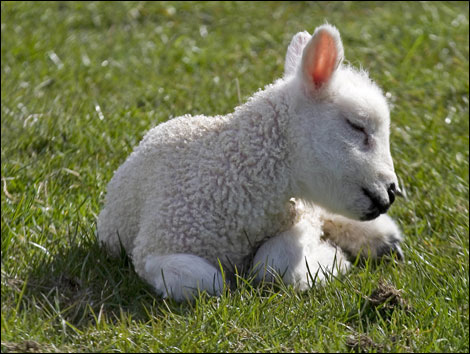
Ovine Incarnation
But there is still more: what if the Shepherd not only lays down his life for the sheep, but becomes the sheep, especially sheep in their most vulnerable form, the small helpless lamb? For at the beginning of John's gospel, we have the words of John the Baptist on seeing Jesus coming: "Behold the Lamb of God, who carries the sin of the world!" And later, in the Book of Revelation, the image, based on ancient Israelite sacrifice, of the Lamb (clearly the same Jesus) slain from the foundation of the world. Nonetheless this Lamb, standing though slain, shall prevail over the violent, or rather over violence itself. Then, in a glorious climax, comes the marriage of the divine-human-(ovine?) Lamb. "Blessed are those who are invited to the marriage supper of the Lamb!" (Rev. 19:9)
We cannot begin to exhaust here the meaning of these mysterious and marvelous words, but one thing is clear from the perspective of those of us who dine at the peaceable table: an animal, even if lost, even if abused and killed, can nonetheless be infinitely beloved, can bear infinite meaning. That animal can be saved, can be worth the life of the savior, can himself or herself save, and then in one of the wonderful up-endings of which the Christian religion is sometimes capable, can reign on the throne of God and of the Lamb, in the Day of infinite Light, "when night shall be no more" Rev. 22:3-4).
Image of shepherd and flock by Kristi Kaeli.
Photo of lamb by Giuseppe Bignardi.
Unset Gems
We are made in the image of God's love! We share God's essence of love with every creature . . . therefore, we all connected . . .
--Lorena Mucke

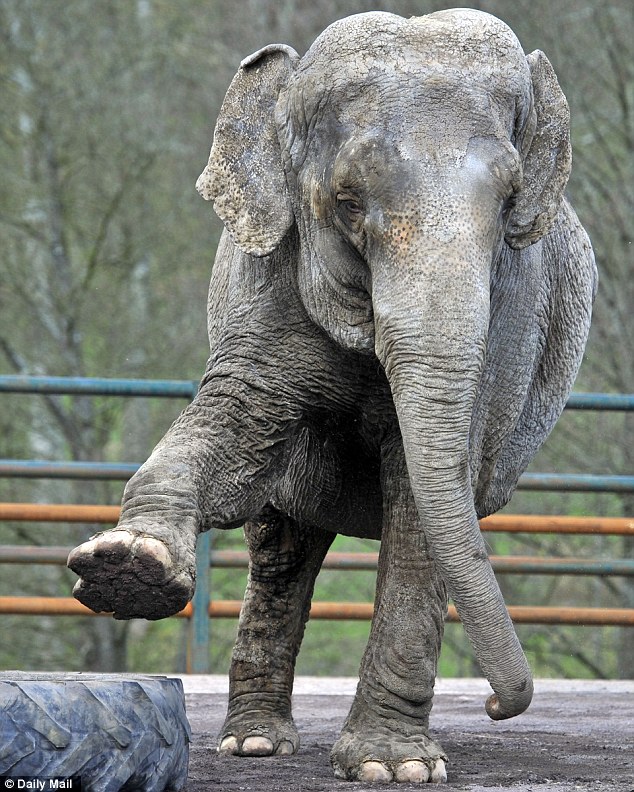 Over many years, Captive Animals Protection Society (CAPS) and other groups and individuals had been urging that Anne the elephant, held captive alone in Bobby Roberts’ circus in the U.K. for most of her 57 years, should be released to better accommodations.
Over many years, Captive Animals Protection Society (CAPS) and other groups and individuals had been urging that Anne the elephant, held captive alone in Bobby Roberts’ circus in the U.K. for most of her 57 years, should be released to better accommodations.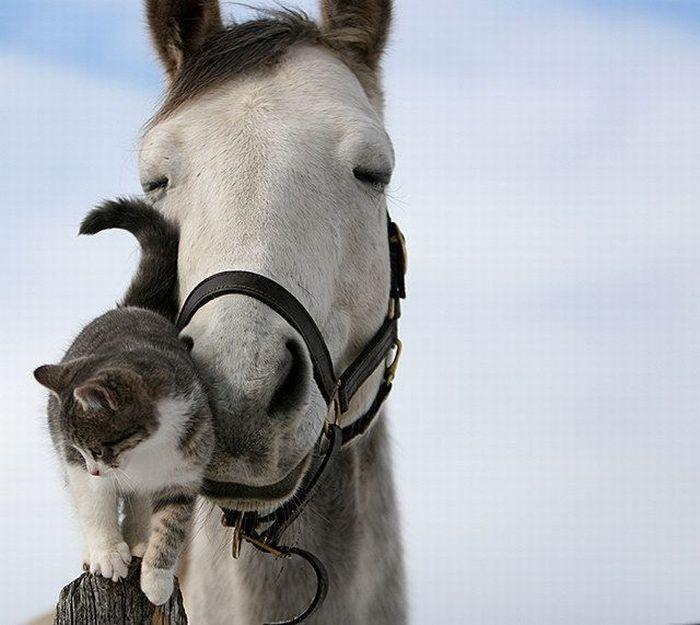
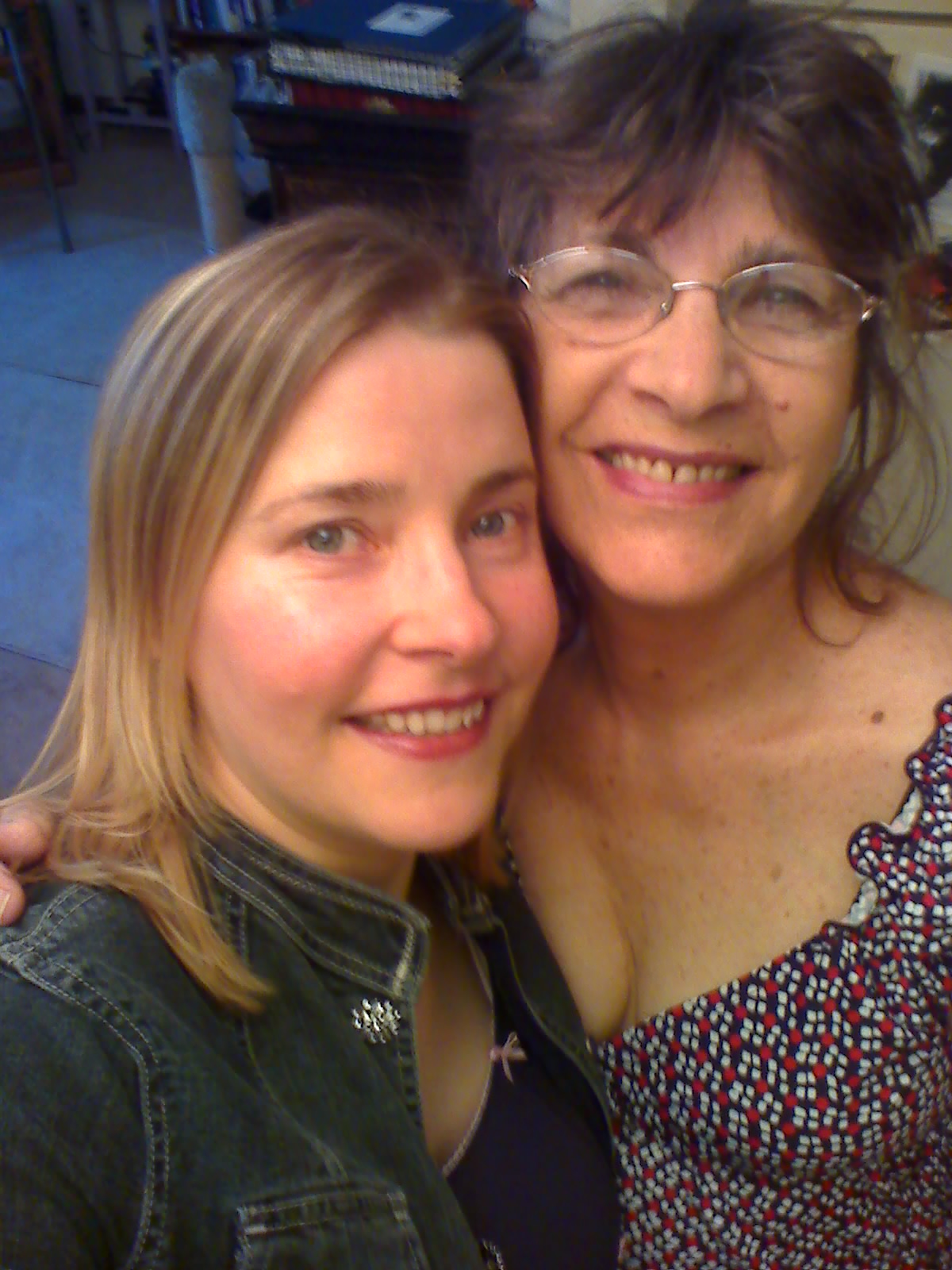 Thank you for your review of the Dalai Lama and consumption of animals in the April PT. Yes! they eat pigs not pork. I have had mixed feelings on what I perceive as mixed messages. Your explanation of the cold mountain climate and difficulty growing vegetation partly explains their exploitation and survival from animals which would also apply to other parts of the world as well. However, what explains the other part, in your view? I have read that eating whatever a host presents to a Buddhist is considered a form of respect and humility. Personally, I don't buy this one as it is cavalier and impulsively decided lacking commitment and morality at any level. For example, if I oppose child abuse and I am visiting another home where a child is being abused, ought I accept it as normal for this environment . . .?
Thank you for your review of the Dalai Lama and consumption of animals in the April PT. Yes! they eat pigs not pork. I have had mixed feelings on what I perceive as mixed messages. Your explanation of the cold mountain climate and difficulty growing vegetation partly explains their exploitation and survival from animals which would also apply to other parts of the world as well. However, what explains the other part, in your view? I have read that eating whatever a host presents to a Buddhist is considered a form of respect and humility. Personally, I don't buy this one as it is cavalier and impulsively decided lacking commitment and morality at any level. For example, if I oppose child abuse and I am visiting another home where a child is being abused, ought I accept it as normal for this environment . . .?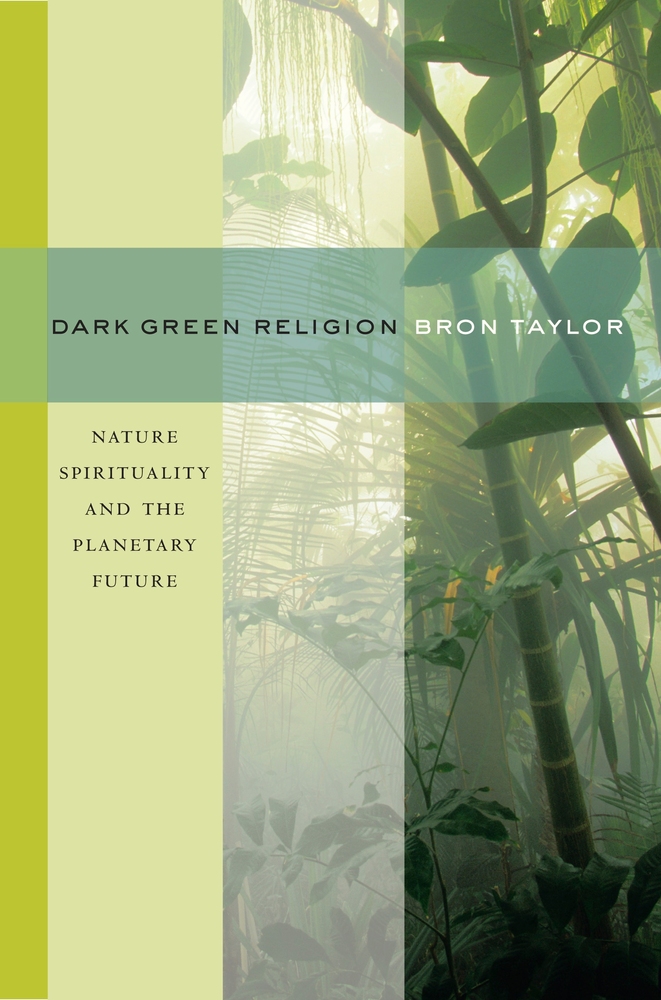 I first knew Bron Taylor some years ago, when he was a graduate student in the School of Religion of the University of Southern California, and I was a faculty member. With pride I have followed his steady rise since to become one of the leading voices in religion and ecology. Indeed, Taylor's new book is nothing less than a founding proclamation of dark green religion, giving this emergent spirituality a name, basic doctrines, and even a canon of scriptures. His thesis is that nature as a religion is now ready to go as an independent faith, most adherents of the older creeds having failed in respect of nature and its concerns. But here a new gospel is offered to a world which, ready or not, desperately needs ecological salvation.
I first knew Bron Taylor some years ago, when he was a graduate student in the School of Religion of the University of Southern California, and I was a faculty member. With pride I have followed his steady rise since to become one of the leading voices in religion and ecology. Indeed, Taylor's new book is nothing less than a founding proclamation of dark green religion, giving this emergent spirituality a name, basic doctrines, and even a canon of scriptures. His thesis is that nature as a religion is now ready to go as an independent faith, most adherents of the older creeds having failed in respect of nature and its concerns. But here a new gospel is offered to a world which, ready or not, desperately needs ecological salvation.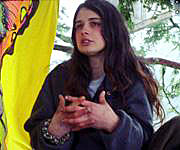 Another example is Julia "Butterfly" Hill, who in 1997-99 spent more than two years living in a giant redwood tree to keep it from being logged. Afterwards, she said, "I stopped being a vegetarian after that tree sit because I connected with that tree so intensely. . ." The reasoning is unclear. She can hardly claim that the tree is a predator; perhaps she means that the energy of the tree was as close to her own as an animal's might be, so that eating a plant or an animal comes to the same thing.
Another example is Julia "Butterfly" Hill, who in 1997-99 spent more than two years living in a giant redwood tree to keep it from being logged. Afterwards, she said, "I stopped being a vegetarian after that tree sit because I connected with that tree so intensely. . ." The reasoning is unclear. She can hardly claim that the tree is a predator; perhaps she means that the energy of the tree was as close to her own as an animal's might be, so that eating a plant or an animal comes to the same thing.  "Instead of being represented by a single charismatic leader and sacred text, it has many." But in religious history, there has always been strength in one leader, one text. Green religion--how dark remains to be seen--is bound to come to us, at the decisive moment in the valley of decision, as an overwhelming presence, sight, and symbol emblazoned on the minds of millions. We may hope that hour may come soon, and also that, with regard to the preceding faiths, the new incarnation will come not to destroy the law and the prophets, but to fulfill them--that is, to affirm and unfold their potentials for our times.
"Instead of being represented by a single charismatic leader and sacred text, it has many." But in religious history, there has always been strength in one leader, one text. Green religion--how dark remains to be seen--is bound to come to us, at the decisive moment in the valley of decision, as an overwhelming presence, sight, and symbol emblazoned on the minds of millions. We may hope that hour may come soon, and also that, with regard to the preceding faiths, the new incarnation will come not to destroy the law and the prophets, but to fulfill them--that is, to affirm and unfold their potentials for our times.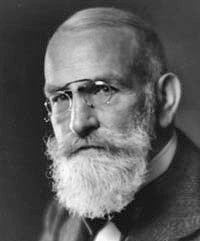 Arau, Switzerland was the birthplace of Maximilian Bircher-Benner. He studied medicine in Vienna, Berlin, and Zürich, took his degree in Zürich in 1891, and set up his practice there.
Arau, Switzerland was the birthplace of Maximilian Bircher-Benner. He studied medicine in Vienna, Berlin, and Zürich, took his degree in Zürich in 1891, and set up his practice there.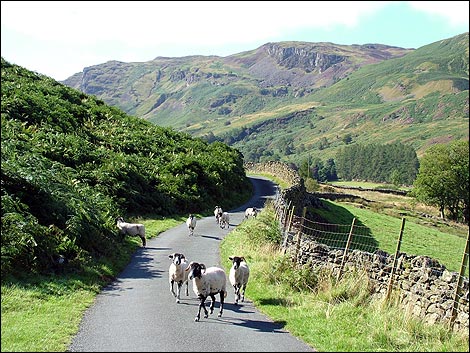
 Up in the blue, blue mountains
Up in the blue, blue mountains